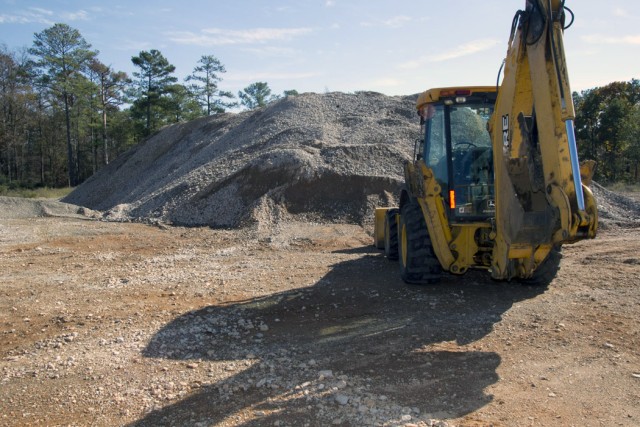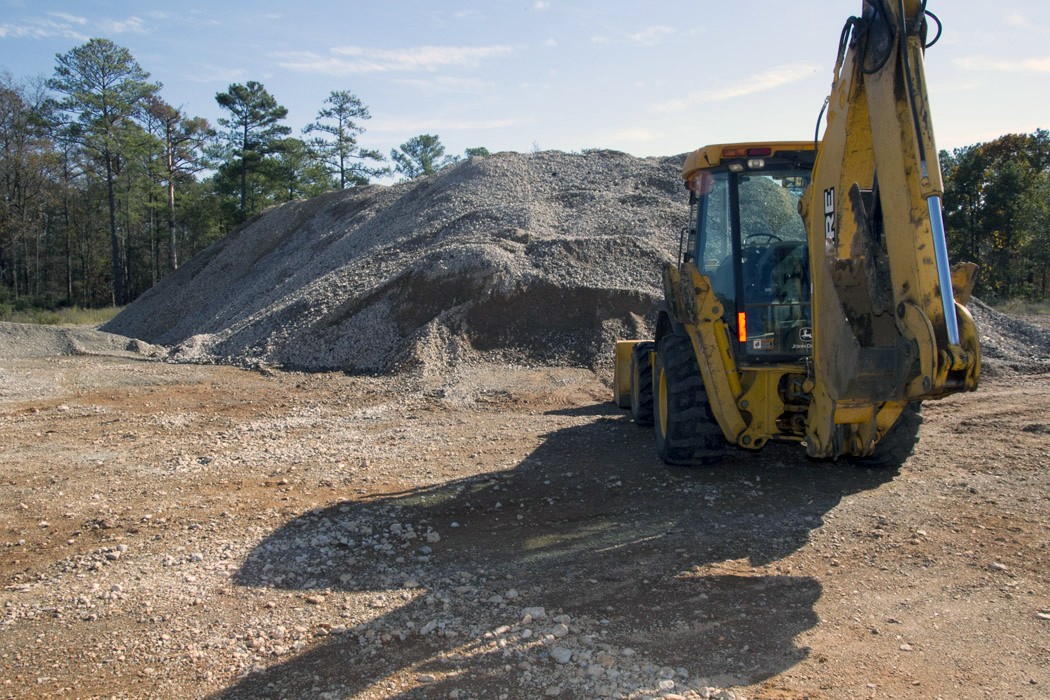ANNISTON ARMY DEPOT, Ala. - A 2010 value stream analysis here identified ways to divert construction and demolition waste from being sent to landfills.
Conducted by the depot's Directorate of Risk Management, the VSA resulted in meeting goals outlined in Executive Order 13514, which requires federal facilities to divert at least 50 percent of construction and demolition, or C&D, materials and debris from landfills.
Before the VSA, the heaviest waste stream from the depot was concrete containing re-bar or wire mesh. DRK environmental engineer Robert Jones began looking into the possibility of crushing the concrete and using it for road stabilization or anywhere else gravel was normally used.
"This new recycling effort is a stellar example of true environmental stewardship," said Jones.
Almost all of the concrete and metal from the old building was salvaged. The metal was recycled and the concrete crushed for use as fill material in the new building's foundation.
"Concrete is by far the largest item by weight we see from C&D projects," said Jones. "While in the past it was placed in a landfill, we now find uses for it."
The depot worked closely with Army Contracting Command to open the concrete crushing contract for bidding.
While looking for vendors that could do the crushing, the depot accumulated concrete instead of sending it to the landfill, which is located 27 miles away.
"By doing this, we kept approximately 420 very heavy loads off the road going to the landfill," said Jones.
The contract was awarded to Fuller Five out of Birmingham and the contractor mobilized on site Oct. 14, 2010.
During the next month, there were 7,332 tons of concrete crushed that yielded 4,534 cubic yards of material at a cost of $125,871, which was paid with recycling funds, thus no depot funds were involved.
There were three main benefits from concrete crushing. First, the cost for disposal of that amount of concrete would have been more than $200,000.
Secondly, the depot received 4,534 cubic yards of free material to be used in stabilization projects.
Finally, the recycling of this material allowed the depot to exceed the diversion requirements of EO 13514.
This was not a one-time project, but a change in how the installation handles concrete waste. The depot has already begun accumulating concrete again and, when enough has been accumulated, the concrete crushing contractor will return.


Social Sharing